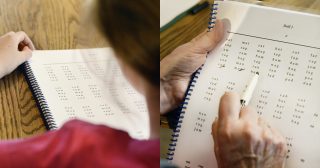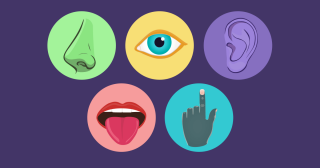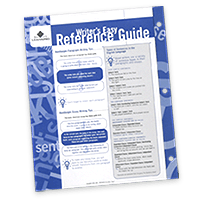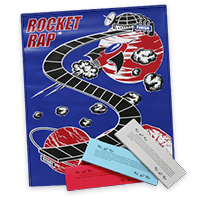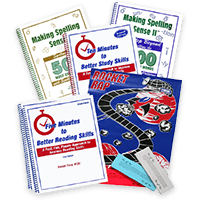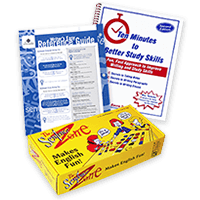My son is 8 and has really struggled with learning. What do I do? Where should I start?
May 27th, 2009I have read the free ebook and reviewed the books and kits you have for sale. Does the kit with the five books cover all learning disabilities. I see that the one book helps identify the problem area(s). My son is 8 and has really struggled with learning and he really has a desire to learn. It has been difficult to find products that show what to do after the problem is identified and that are easy to use. I don’t want to purchase a package if it is not what we need. He does, however, have most of the problems listed in the ebook question list (90%) and it is frustrating for both of us helping him along. Do you think it would be wise to order the book on identifying his challenge areas first? Or do you have a kit that includes the book for this? Thank you and looking forward to hearing from you.
Sincerely,
Gena Smith
Gena,
I always like to start with understanding exactly what is going on…why a student is struggling and what areas are they good in. This helps me to be more patient and efficient when I’m teaching them. I want to be sure that I’m addressing all of their needs.
For instance, you work on phonics with a student and he really gets it, but is still struggling, the problem may be visual tracking, visual memory, visual closure, or any of the other areas of visual, auditory, or tactile/kinesthetic processing that were not addressed with the phonic program. So what you actually needed to do was to work on those areas. Ultimately you spent time, effort, and money and haven’t solved the problem. And, in the meantime your son gets more frustrated because learning is still hard.
Another example would be when a student has trouble remembering their multiplication tables, knowing if they have visual memory or auditory memory problems makes a difference. If the problem is one of understanding the concept of what is mathematically happening with numbers when you multiply them you would do something different to help them. Spatial awareness comes in too with the understanding that 4 x 5 is the same as 5 x 4 (They take up the same amount of space if the boxes below were all the smae size. Unfortunately the size changed when I put the tables in.)
|
1 |
2 |
3 |
4 |
|
2 |
|
|
|
|
3 |
|
|
|
|
4 |
|
|
|
|
5 |
|
|
|
4 x 5
|
1 |
2 |
3 |
4 |
5 |
|
2 |
|
|
|
|
|
3 |
|
|
|
|
|
4 |
|
|
|
|
5 x 4 = 20
So, when I created my products, I created them in such a way that each of them would address multiple areas of auditory, visual, and tactile kinesthetic processing sub-categories. That would ensure that I would be addressing their problematic areas, even if I didn’t know what each of their specific problematic areas was. Just using these materials would ensure that I’d be hitting the critical areas that students have problems with and at the same time teach them the specific skills they needed.
That said, no the learning pack does not include the Learning Difficulty/Disability Pre-Screening Tool and Informal Comprehensive Identification Tool. That is sold separately. It is very reasonably priced at only $37.00. Remember, taking your son to someone for testing can be anywhere from $500.00 to thousands of dollars.
I’ve listed the areas of perception that each of the products addresses.
Five Minutes to Better Reading Skills
Addresses: auditory and visual perception difficulties, specifically visual closure, visual tracking, auditory discrimination, auditory visual integration, auditory closure, and auditory memory. It is phonological, incorporating every vowel and consonant combination in the English language, with lots of review built in. It also includes a retrieval automaticity component that is critical in ensuring that children understand what they read.
Making Spelling Sense and Making Spelling Sense II
The auditory areas addressed are: auditory discrimination, auditory closure, auditory visual integration, auditory memory, and auditory visual coordination. The visual areas addressed are: visual tracking, visual closure, visual discrimination and form constancy, visual motor, and visual integration. The tactile-kinesthetic areas addressed are: laterality, directionality, spatial-temporal, and sensory motor integration.
The English language has a specific structure. There are eight spelling patterns in the language and the patterns are taught with story explanations. The process used shows students how letters come together eight different ways to make words. It takes the guess work out of spelling.
Ten Minutes to Better Study Skills
Addresses the following visual, auditory, and tactile-kinesthetic processing areas: visual memory, visual figure ground, visual closure, visual language association, visual language classification, auditory-visual coordination, auditory language association, auditory memory, laterality, spatial temporal, and sensory motor integration.
Writing and study skills it covers include: note taking, paragraph writing, essay writing, research paper writing, and letter writing. You will be able to teach your students the secrets to improving their reading comprehension as well as the secrets to improve their studying and the seven steps to take on test day to improve their test scores.
Addresses visual motor, visual language classification, visual closure, spatial-temporal,
laterality, directionality, contact, and sensory motor areas of perception.
The Writer’s Easy Reference GuideTM is an individual resource for all students. It includes paragraph writing hints, essay writing hints, steps of the writing process, words to make your writing more interesting, common prefixes, suffixes and root words, grammatical and literary terms, how to write a bibliography with examples and much, much more. It “unlocks the code” of how to write a sentence, then a paragraph, then a better paragraph, then an essay. The guide helps all to be confident and competent writers.
Addresses visual memory and auditory memory too! Students read short passages of materials, identify the main idea and details, and rephrase the content in their own words. That is exactly what students do when they play the Comprehension Zone. Bonnie has created a visual/kinesthetic method for teaching kids of all ages how to read for meaning. They play for main idea, details, both, or to sequence what they have read or listened to.
Addresses spatial awareness, visual form constancy, and visual motor areas of perception.
The BT Easy Math Reference GuideTM starts with addition and subtraction. Then, this 16-page guide shows step by step how to solve all elementary math calculations right up to fractions and decimals. Also covered are all those “other” math topics, such as word problems, bar and circle graph, rounding and estimating, place value, geometry, measurements, money, and averaging. You’ll learn the how, the why, and the memory tricks to help your students remember. Simple, clear examples, all in a sturdy, 3-hole-punched format you can slip into a binder. It’s a great supplement to any math program, for both parent and student.
B & D Posters are used by families as well as classrooms, typically one per classroom at the primary grade levels. The B&D Stickers come with 10 in a pack and are used with primary age children, typically placed on their desk as a reminder. Middle Grade and High School students who still have reversal difficulties love them and usually put them inside their binders as a reminder.
Hope this is helpful.
Let me know if you have any more questions.
Bonnie Terry, M. Ed., BCET













